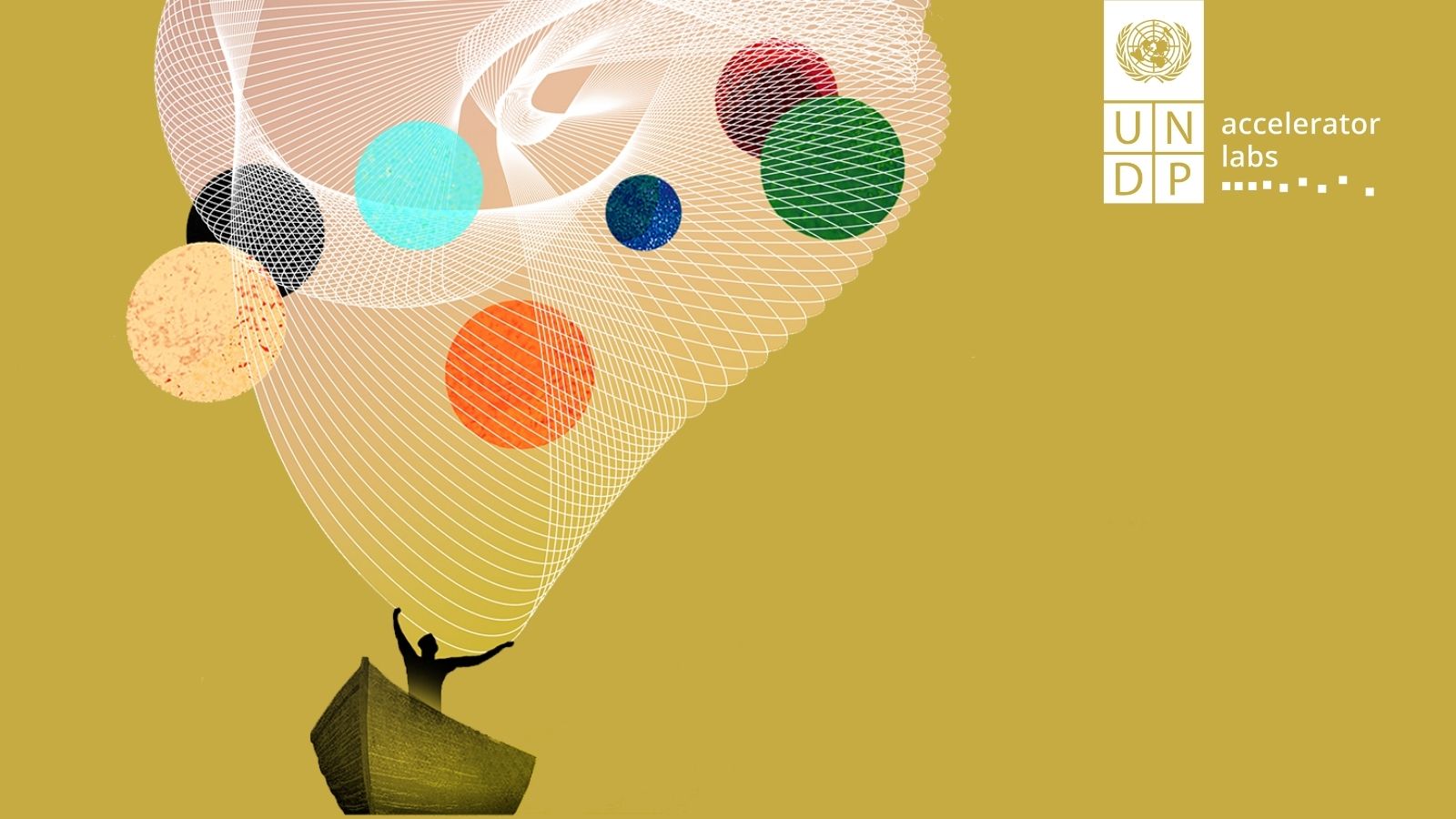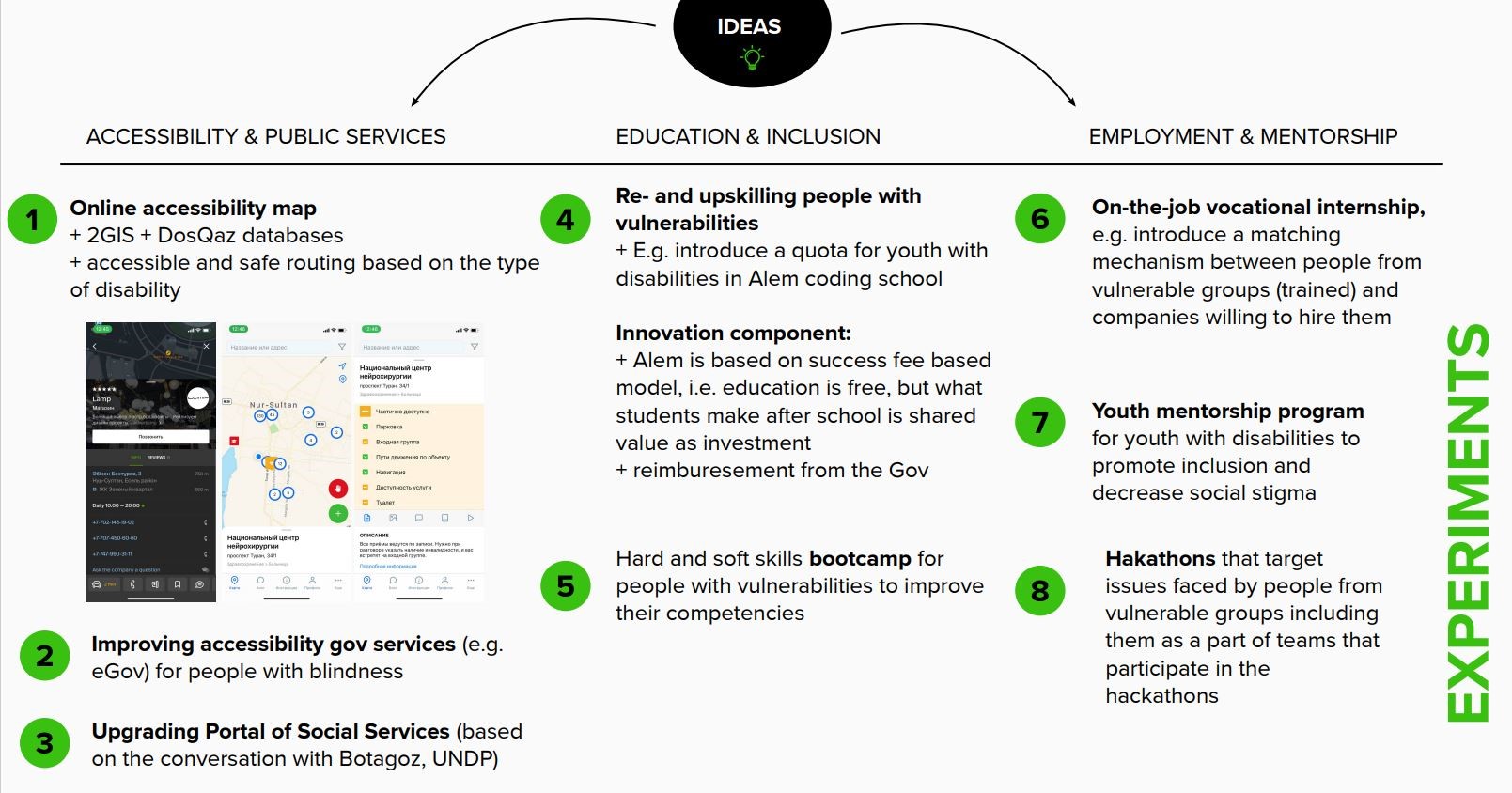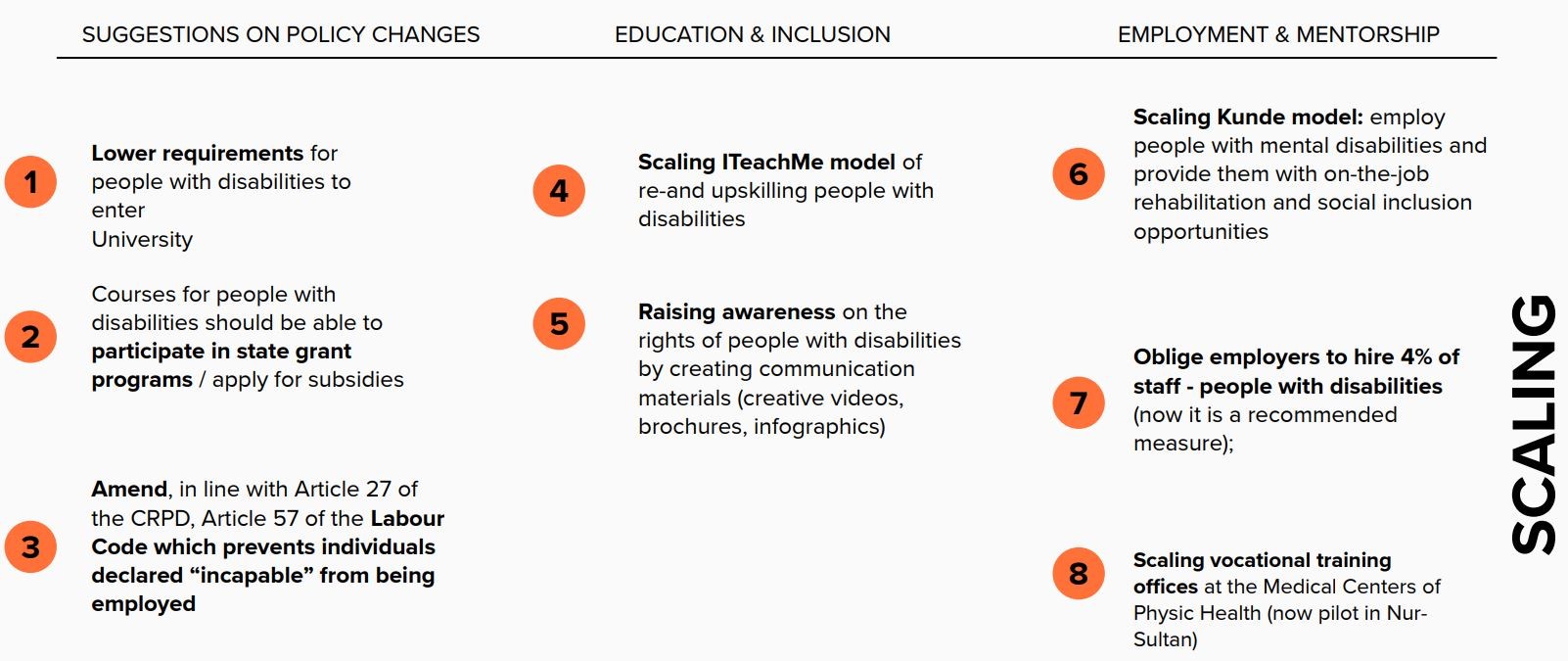What does innovative thinking mean? It is our ability to come up with new ideas and approaches to problems we face. Even when addressing complex problems, we can be creative and flexible to make sure we are open to nontrivial solutions and out-of-the box thinking.
Our team at UNDP Kazakhstan Accelerator Lab is doing just that – bringing new ways of thinking into development, more precisely into the design of development interventions, as one of the core elements of our work. In short, we are being creative to offer solutions for the complex challenges of 21st century.
Just recently, our team dedicated some effort to developing a system approach, or a methodology if you want, that we can use to structure all the information gathered throughout our brainstorming and research. This method helps us learn a new topic quickly and generate new ideas as a result.
We decided to put this method of rapid research into practice and applied it on one of the priority development areas of the UNDP Country Office in Kazakhstan: Addressing social vulnerabilities and inequalities. Thanks to the new approach, in one week, we were able to generate several evidence-based ideas worth experimentation.
Below we break down the new methodology for you, describing concrete actions we undertake when studying a problem, or an area, looking for ideas to address it through experimentation and innovation.
1. Exploration: understanding the topic, defining focus areas and key actors
First, we look at the area from a bird’s eye perspective, acquiring foundational understanding of it, and defining focus areas and key actors. This is a important exercise to quickly familiarise ourselves with the nature of the context we are looking at. As an example, you can see our summary of focus areas and potential beneficiaries in boxes below.
2. Solutions Mapping: identifying existing policies and local solutions
Next comes looking into existing legal framework (e.g. policies) and solutions (e.g. NGOs, start-ups, individual entrepreneurs). In this step, we map out policies (laws, regulations) regulating the targeted problem area, alongside existing local solutions that are addressing it. This approach allows us to understand what initiatives are already being implemented so that we are not reinventing the wheel.
In addition to local initiatives, we also benchmark existing global solutions to scout for relevant products and services. This way, we see what’s going on beyond Kazakhstani context that can still be fully or partially relevant.
Learning from people
Next stage has a more human element to it. Ready? Designing any product or service should be human-centered, so here we hear from those whose lives we want to improve and aggregate their perspectives. Through interviews, we learn what our target group knows and thinks about the problem area and what solutions they suggest.
Utilizing UNDP Accelerator Lab Network
Finally, we look into what we can learn in-house (i.e. amazing network of 90+ Accelerator Labs globally). That means we are looking at the existing UNDP Accelerator Lab projects that are related to the area we are working on. Leveraging the global Accelerator Labs practice is beneficial as we have similar approaches that can be replicated across the network.
3. Experimentation: ideating solutions for experimentation and scaling
Once the exploration and solutions mapping parts are done, it is easier to see the big picture when it comes to the topic of our interest – addressing social vulnerabilities and inequalities. As a result, we come up with a lot of ‘food for thought’ for how to improve the existing situation. Some ideas come to our mind immediately, while others pop up after our team discussions. The more thorough the preliminary analysis is, the greater the variety of perspectives and number of solutions we suggest for experimenting.
We create two groups of ideas: the first one lists ideas for experimentation and the second one has ideas for scaling that do not need experimenting. The reason for this is because the second group contains either already tested models or ready recommendations for policy changes.
In summary, this approach allows our Accelerator Lab team to tackle complex topics within a relatively short period of time. It can be challenging to fight the urge to do a thorough traditional research to make sure different aspects are included. However, we realize that often there is no time for a full-fledged scientific research, therefore, adopting at least a part of the framework outlined above can bring new perspectives to the project. By no means this method is complete or ideal, it is simply another way to look at how to integrate experimentation to tackle complex issues.

 Locations
Locations







